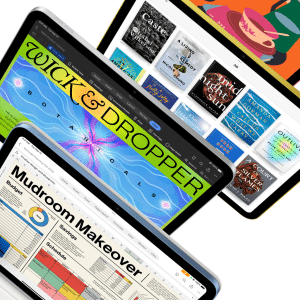Many people use their smartphones to watch video, play games and wake them up in the morning. Some even use them to generate digital boarding passes to fly. So why not use phones to buy stuff at retail stores as well?
A variety of mobile wallet systems store credit or debit card information on phones in encrypted form, offering more security than standard plastic cards with magnetic stripes. To make a purchase, simply tap the phone on a card reader or wave a bar code over a scanner. There’s convenience in not having to fish out your card.
Yet most people still prefer plastic.
Mobile payments have perpetually “been 18 months away from being big,” said Kebbie Sebastian, managing director of Penser Consulting, a London-based payments advisory firm.
Use has been limited to a handful of retail stores, vending machines and transit systems around the world. A 2013 report from the Federal Reserve in the U.S. said only 6 percent of smartphone users had made such a payment within the previous year.
That isn’t stopping proponents from making yet another push this week at the Mobile World Congress wireless show in Barcelona, Spain.
Visa and MasterCard both plan to let phones with near-field communication chips, or NFC, access card information over the Internet. Before, the data had to be stored on a secured part of the phone and required the cooperation of device makers and mobile operators, which had competing payment systems.
Samsung, meanwhile, said its new Galaxy S5 smartphone will allow people to authenticate PayPal transactions with a fingerprint rather than a passcode. It comes as PayPal works on equipping merchants with wireless sensors so that repeat customers can pay while leaving their phones in the pocket.
And a startup called LoopPay recently released an iPhone app that works with a phone case or attachment to imitate the magnetic signals that regular cards produce when swiped. This way, retailers can accept app payments with standard card readers.
One of the biggest obstacles has been the lack of readers that retailers can use to accommodate mobile payments.
Avivah Litan, a security analyst at Gartner, said that’s changing as U.S. merchants face a 2015 deadline to accept cards with security chips, which are currently more common in Europe than in the United States.
That’s when Visa will shift some of the liability for fraudulent transactions to the merchant. Retailers are upgrading card readers as a result, and those typically come with NFC technology.
But there’s still a question of which NFC system to accept. A merchant often must enable its checkout system for one or more payment types.
Google has Wallet, while Verizon, AT&T and T-Mobile are working jointly on Isis. Visa has tools for merchants and banks to build apps for consumers to make payments. MasterCard plans guidelines soon. Several retailers including Walmart, Target and 7-Eleven are collaborating on a separate phone app for consumers to pay.
Beyond NFC, an app from the startup Square uses the phone’s location technology, such as GPS. The cashier sees a list of Square users nearby and picks the one with the customer’s photo to complete the payment. Starbucks accepts Square, but also has its own app that generates a bar code tied to a customer’s Starbucks loyalty card. PayPal’s system is similar to Square.
Even if these competing systems are made compatible with one another, consumers will need persuasion.
Security is the chief reason Americans resist mobile payments, according to the Federal Reserve study, although many people also fail to see any benefit.
“In the United States, carrying a credit card is not considered an inconvenience,” said G.V. Kumar, CEO of Xius, a mobile payments technology company in North Chelmsford, Mass.
Where mobile payments have been more successful is in emerging markets, where credit cards aren’t as widespread. Payment systems there allow people to charge goods and services to their phone bills. In Kenya, a mobile service called M-Pesa became an easy and cheap way for people to send money to one another, Sebastian said.
As for security, it’s mostly a matter of addressing misconceptions.
Despite consumers’ fears, mobile systems typically offer more security than standard cards. Plastic cards have visible numbers that unscrupulous waiters can jot down. Lose one, and you must call the card’s issuer to cancel. Mobile apps can be set up to require passcodes, and cards can be removed remotely.
Sam Shrauger, a Visa executive for digital services, said phone apps can also facilitate one-time card numbers, which won’t work for additional transactions.
That could help reduce fraud should a merchant’s computers get hacked, though experts aren’t sure the recent breaches at Target and other retailers will be enough to push consumers into believing mobile payments are safer.
Matthew Talbot, senior vice president for mobility with the German technology services company SAP AG, said new technologies always take time to gain acceptance. He noted that ATMs and Internet banking faced similar fears early on.
Beyond security, mobile payments will need to offer something unavailable with standard credit cards. For instance, they could incorporate retailers’ loyalty programs and offer deals based on past purchases and the phone’s location.
At the Barcelona show, customers who order and pay for lunch with PayPal ahead of time are able to get on an express line to pick up their orders. A coffee shop with long lines every morning can also enable PayPal’s technology.
“It’s not about payments. It’s not the technology. It’s about solving real consumer problems,” said Anuj Nayar, senior director for global initiatives with eBay Inc.’s PayPal business.
The technology to make all that happen is just starting to come together, Sebastian said. Back-end servers are getting faster at analyzing data, while location technology can now pinpoint customers down to the aisle.
Sebastian said mobile payments won’t suddenly take off this year, but “it’s closer than it’s ever been before. We’re on the cusp of it.”
He means it this time.
Associated Press/AP Online











